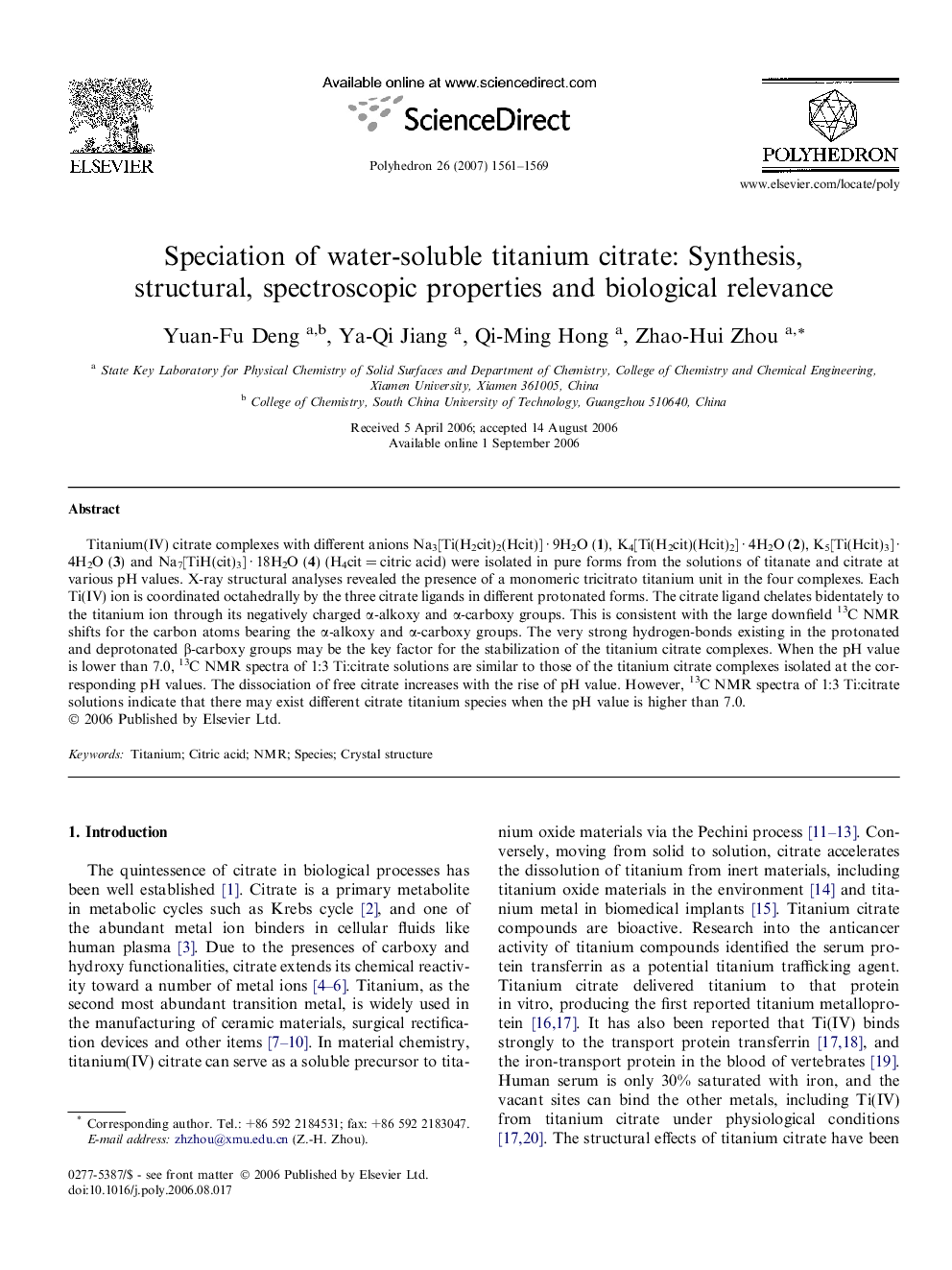| Article ID | Journal | Published Year | Pages | File Type |
|---|---|---|---|---|
| 1338619 | Polyhedron | 2007 | 9 Pages |
Titanium(IV) citrate complexes with different anions Na3[Ti(H2cit)2(Hcit)] · 9H2O (1), K4[Ti(H2cit)(Hcit)2] · 4H2O (2), K5[Ti(Hcit)3] · 4H2O (3) and Na7[TiH(cit)3] · 18H2O (4) (H4cit = citric acid) were isolated in pure forms from the solutions of titanate and citrate at various pH values. X-ray structural analyses revealed the presence of a monomeric tricitrato titanium unit in the four complexes. Each Ti(IV) ion is coordinated octahedrally by the three citrate ligands in different protonated forms. The citrate ligand chelates bidentately to the titanium ion through its negatively charged α-alkoxy and α-carboxy groups. This is consistent with the large downfield 13C NMR shifts for the carbon atoms bearing the α-alkoxy and α-carboxy groups. The very strong hydrogen-bonds existing in the protonated and deprotonated β-carboxy groups may be the key factor for the stabilization of the titanium citrate complexes. When the pH value is lower than 7.0, 13C NMR spectra of 1:3 Ti:citrate solutions are similar to those of the titanium citrate complexes isolated at the corresponding pH values. The dissociation of free citrate increases with the rise of pH value. However, 13C NMR spectra of 1:3 Ti:citrate solutions indicate that there may exist different citrate titanium species when the pH value is higher than 7.0.
Graphical abstractThe pH-dependent interconversions of titanium citrate complexes and solution behavior of the titanium citrate binary system were investigated in aqueous solutions.Figure optionsDownload full-size imageDownload as PowerPoint slide
